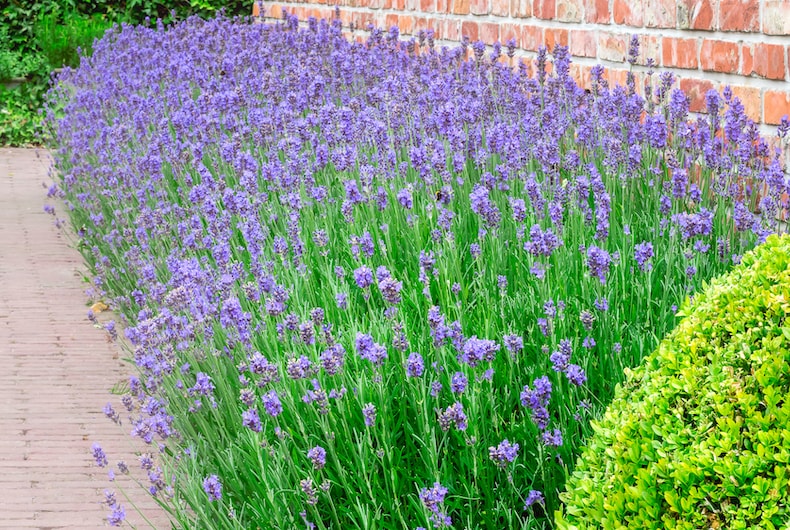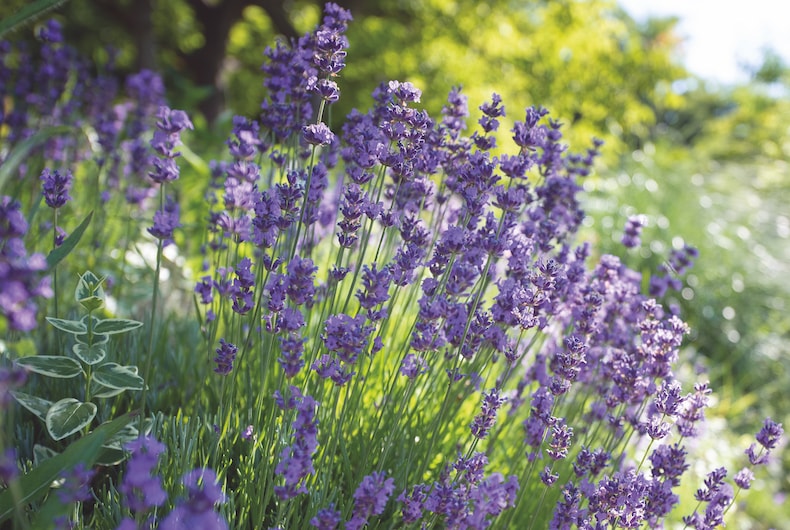
How to prune lavender
Lavender needs regular pruning if you want it to keep flowering, stay healthy and live longer. Properly pruned, some varieties of lavender can last up to 20 years. Left untouched, it soon becomes shapeless and woody with bare stems and few flowers. Here, expert horticulturist Mandy Bradshaw explains how to prune your lavender to maintain an attractive, sweet-smelling shrub that will brighten your garden for many years to come.
Browse our full range of lavender plants to find the perfect varieties for your garden.
What type of lavender do you have?

Neat dwarf varieties make lovely low hedges if well maintained
Image: Lavender 'Munstead' from Thompson & Morgan
The first step to pruning lavender correctly is knowing which variety you’ve got. English lavender (Lavendula angustifolia and L. x intermedia) is the hardiest and needs to be pruned the most.
What’s often referred to as French lavender (L. stoechas) has ‘ears’ above the flowers and is really only frost-hardy, rather than completely hardy. It needs to be treated more gently.
There are also a number of tender lavenders with three-headed flower spikes. These need to be kept in a greenhouse or conservatory over the winter if you want them to last more than one season.
Whichever lavender you’re growing, a sharp pair of secateurs is needed to ensure a clean cut.
Pruning hardy lavenders

English lavenders like 'Hidcote' should be pruned in late August
Image: Lavender 'Hidcote' from Thompson & Morgan
Hardy lavenders are best pruned after they have finished flowering in late August or September. Traditional advice used to be that you should never cut into the old wood. However, opinions have changed and gardeners are now told to cut back to about 22cm (9ins). What is critical, is that you cut to just above a group of new shoots. Go any lower and the lavender will die.
Pruning half-hardy lavenders

The ornamental flowers of this French lavender are a pretty lilac colour
Image: Lavender 'Pink Summer Improved' from Thompson & Morgan
Frost-hardy lavenders flower for longer, so prune after the first flush of flowers has faded by following the same guidelines as for hardy lavender. After that, just keep deadheading and, if needed, tidy up at the end of the season. Don't cut them any later than mid-September.
Pruning tender lavenders
Tender lavenders should be deadheaded throughout the summer and, occasionally cut back hard to new growth if the bush is getting out of shape.
All lavenders need to be pruned regularly to help them thrive, and it's almost impossible to rejuvenate a neglected plant once it has been left too long. If this is the case, it's usually easier to replace your lavender and start again by planting seeds, plug plants or potted garden-ready plants.
See all pruning guides
Individual guides
Flower & Shrubs
- Pruning Buddleja
- Pruning Camellias
- Pruning Clematis
- Pruning Fuchsias
- Pruning Hydrangeas
- Pruning Hypercium - St Johns Wort
- Pruning Magnolias
- Pruning Passion Flowers
- Pruning Rhododendron
- Pruning Ribes Sanguineum
- Pruning Rosemary
- Pruning Roses
- Pruning Tree Peonies
- Pruning Wisteria
- Pruning Asparagus
- Pruning Blueberries
- Pruning Goji Berries
- Pruning Honeyberries
- Pruning Raspberries
- Pruning Apple trees
- Pruning Box and Yew trees
- Pruning Catalpa trees
- Pruning Christmas trees
- Pruning Olive trees
- Pruning Patio Fruit trees
- Pruning Pear trees
- Pruning Plum trees
Fruit & Veg
Trees

Written by: Mandy Bradshaw, the Chatty Gardener
Cotswold-based Garden Media Guild member, Mandy Bradshaw, is also known as the Chatty Gardener. Passionate about gardening and writing, her beginnings are in football reporting for her primary school, and Mesembryanthemum planting with her mother. Winner of the 2018 Property Press Awards 'Garden Journalist of the Year', she writes for not only her own blog but also a range of newspapers, magazines and other gardening and non-gardening sites.Banner image: photoPOU/ Shutterstock
Sign Up For Exclusive Special Offers




© 2025 Thompson & Morgan. All rights reserved. A division of Branded Garden Products Limited.



